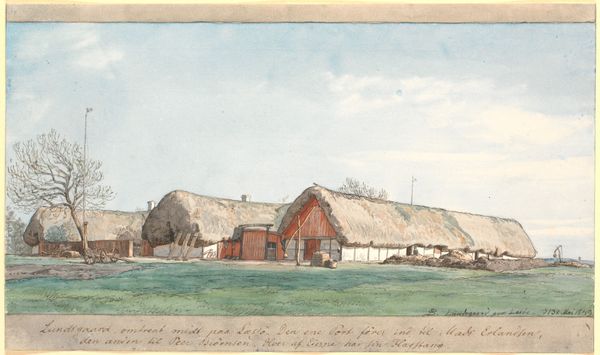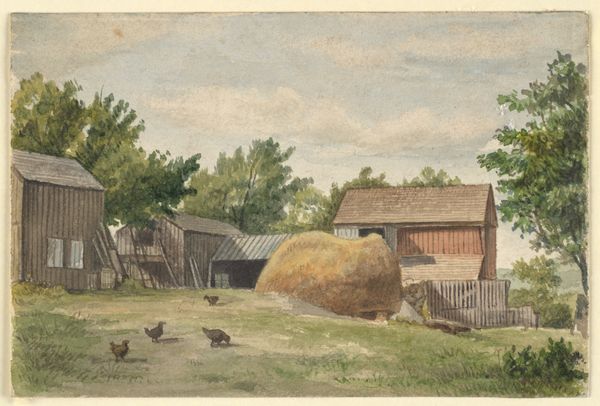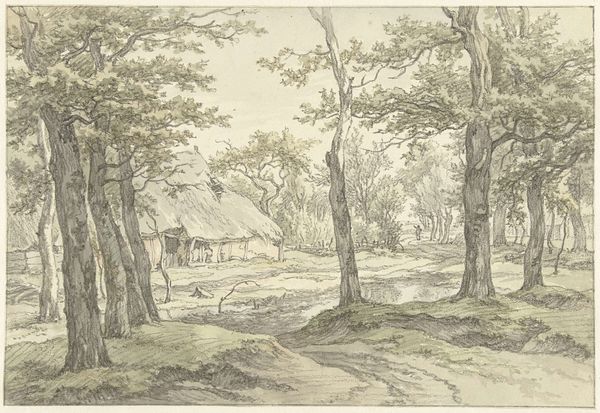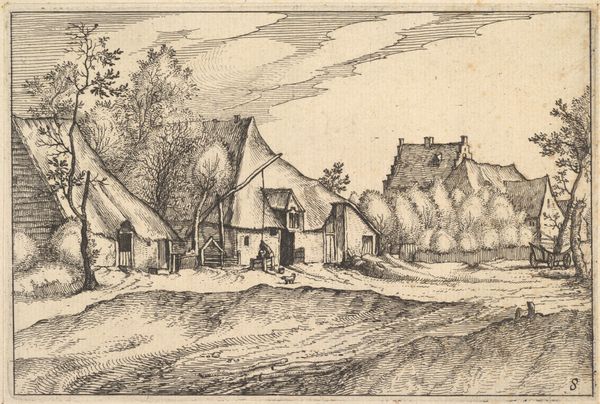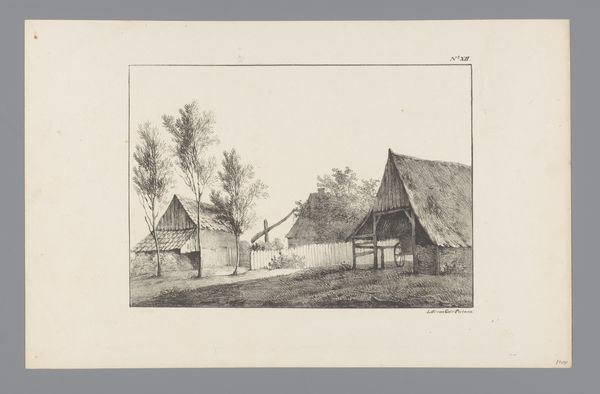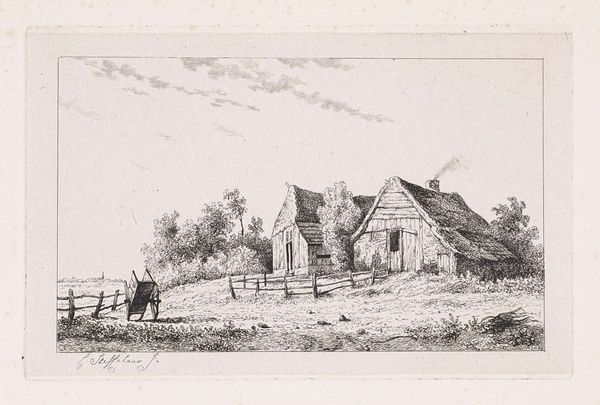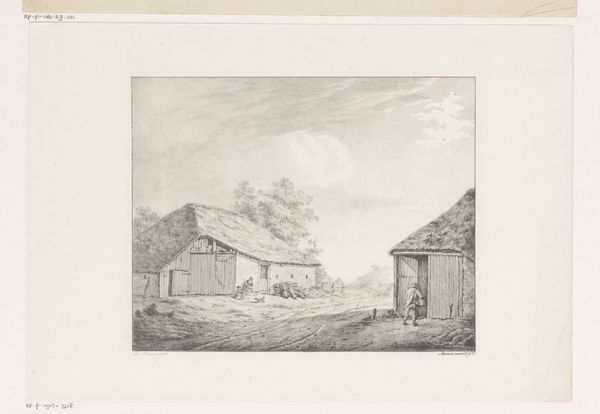
painting, watercolor
#
painting
#
landscape
#
watercolor
#
coloured pencil
#
orientalism
#
genre-painting
#
watercolor
#
realism
Dimensions: height 221 mm, width 371 mm
Copyright: Rijks Museum: Open Domain
Editor: So, this is Adolf Mangold’s watercolor painting, "Oude begraafplaats van Panembahans op Madura," created sometime between 1868 and 1941. The landscape has this quiet, almost dreamlike quality. What do you see in this piece, particularly concerning cultural memory? Curator: Well, first off, that's an excellent observation about the dreamlike quality. When I look at this work, I'm drawn to the shapes and repetition in the architecture; they function almost as glyphs representing the passage of time and spiritual devotion. What do you notice about how the buildings and the landscape are connected visually? Editor: The winding path leads the eye directly to the architecture, unifying the land and structures. Curator: Exactly. And how might the crumbling nature of these structures reinforce ideas about time, history, and the ephemeral nature of life? Think about how a culture remembers. Editor: I see what you mean; the deterioration signifies that things change, and memory becomes fragmented over time. The structures are still standing, though, so culture remains? Curator: Precisely. It becomes a fragmented, reconstructed narrative, like a story told and retold. Also, what feelings are evoked through the colors? Editor: Muted and earthy tones project a sense of serenity. It feels removed from the everyday world. Curator: Yes! The gentle colors suggest a space where ancestral spirits might reside. It captures the landscape, not as a simple place, but as a profound symbolic space of memory and identity. I’d even suggest we reflect upon this orientalist work. Can you observe something particular? Editor: Hmmm… how orientalism seeks to represent the Middle and Far East? So the work is a mirror to observe differences? Curator: Precisely, which may show subtle hierarchies but nonetheless it is meant to preserve cultures. It encourages me to observe beyond my preconceptions, while revealing those embedded in this historical lens. Editor: This has broadened my thinking about how artists weave culture into their work. Thank you for shedding light on this piece. Curator: And thank you for engaging so thoughtfully. These structures are more than buildings, but places of collective remembrance, inviting us to connect across generations.
Comments
No comments
Be the first to comment and join the conversation on the ultimate creative platform.
